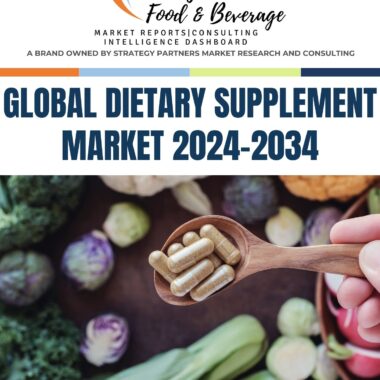Description
Probiotics are live microorganisms that offer a host of health benefits when consumed in adequate amounts. These beneficial bacteria and yeasts are similar to the microorganisms naturally found in the human gut and are widely recognized for their positive impact on digestive health, as well as other aspects of well-being.
The most common probiotics are strains of Lactobacillus and Bifidobacterium bacteria, although other types of microorganisms can also serve as probiotics. Probiotics are available in various forms, including fermented foods, dietary supplements, and certain types of dairy products like yogurt.
One of the primary functions of probiotics is their role in supporting gut health. The human gut is home to a diverse and complex community of microorganisms, often referred to as the gut microbiota. This microbiota plays a pivotal role in various aspects of health, including digestion, nutrient absorption, and immune system function.
Probiotics help maintain a healthy balance in the gut microbiota. They do so by crowding out harmful microorganisms and promoting the growth of beneficial ones. Probiotics can be particularly beneficial when the natural balance of the gut microbiota is disrupted, which can occur due to factors such as illness, antibiotic use, or dietary imbalances.
Another significant benefit of probiotics is their impact on digestive health. Probiotics help regulate bowel movements and alleviate symptoms of common digestive issues like irritable bowel syndrome (IBS) and diarrhea. In addition, they are useful in managing lactose intolerance by assisting in the digestion of lactose, the sugar found in dairy products.
Probiotics are also recognized for their immune system support. A significant portion of the immune system resides in the gut, and a well-balanced gut microbiota contributes to overall immune system health. By promoting a healthy gut environment, probiotics can enhance the body’s ability to defend against infections and illnesses.
Moreover, probiotics are linked to improved oral health. Some strains of probiotics, such as Lactobacillus reuteri and Streptococcus salivarius, have been shown to reduce the growth of harmful bacteria in the mouth, potentially reducing the risk of dental cavities and gum disease.
In recent years, there has been growing interest in the potential mental health benefits of probiotics. Research has suggested that the gut-brain connection plays a significant role in mood regulation and mental well-being. Some studies indicate that certain probiotics may have a positive impact on mental health conditions like depression and anxiety, although more research is needed to fully understand the mechanisms at play.
When choosing a probiotic product, it is essential to consider factors like the strain, dosage, and purpose. Different strains of probiotics may offer distinct benefits. For example, Lactobacillus acidophilus is known for its digestive health support, while Bifidobacterium infantis is used to alleviate symptoms of IBS.
The number of live organisms in a probiotic product is indicated by the colony-forming units (CFUs). The appropriate dosage depends on the specific probiotic and the condition being addressed. It is important to choose a product that matches your specific needs.
Probiotics are available in various forms, including capsules, tablets, and powders. Additionally, many fermented foods are natural sources of probiotics, such as yogurt, kefir, sauerkraut, and kimchi. These foods can be part of a balanced diet that supports gut health.
It’s crucial to note that not all probiotics are created equal. The effectiveness of a probiotic product depends on factors like the strain’s ability to survive the digestive process and reach the gut in a viable state. In some cases, probiotics may not deliver the desired health benefits, so it’s essential to choose products with a solid scientific foundation and consider consulting a healthcare professional for guidance.
In summary, probiotics are live microorganisms that offer a wide range of health benefits when consumed regularly. They play a critical role in supporting gut health, maintaining digestive regularity, enhancing the immune system, and potentially contributing to overall well-being. Probiotics are available in various forms, and selecting the right product depends on individual needs and considerations. Including probiotic-rich foods in one’s diet is also a valuable way to promote gut health and harness the benefits of these beneficial microorganisms.
Table of Content
1 Market Introduction- Global Probiotics Market
1.1 Market Segmentation- Global Probiotics Market
1.2 Key Trends- Global Probiotics Market
1.2.1 Drivers
1.2.2 Restraints
1.2.3 Challenges
2 Global Market Forecast- Global Probiotics Market
2.1.1 By Region
2.1.2 By Product
2.1.3 By Ingredient
2.1.4 By End Use
2.1.5 By Distribution Channel
3 Country Wise Forecast- Global Probiotics Market
3.1 US
3.1.1 Key Trends
3.1.2 Consumer Spending
o Population
o GDP
o CPI
o Spend per Capita
o Spend as a proportion of GDP
3.1.3 Market Forecast- US Probiotics Market
o By Product
o By Ingredient
o By End Use
o By Distribution Channel
3.1.4 Key Competitors- US Probiotics Market
3.1.5 EXIM
3.1.6 Patents
3.1.7 Scenario Analysis- US Probiotics Market
3.1.8 Opportunity Analysis- US Probiotics Market
3.2 Canada
3.2.1 Key Trends
3.2.2 Consumer Spending
o Population
o GDP
o CPI
o Spend per Capita
o Spend as a proportion of GDP
3.2.3 Market Forecast- Canada Probiotics Market
o By Product
o By Ingredient
o By End Use
o By Distribution Channel
3.2.4 Key Competitors- Canada Probiotics Market
3.2.5 EXIM
3.2.6 Patents
3.2.7 Scenario Analysis- Canada Probiotics Market
3.2.8 Opportunity Analysis- Canada Probiotics Market
3.3 UK
3.3.1 Key Trends
3.3.2 Consumer Spending
o Population
o GDP
o CPI
o Spend per Capita
o Spend as a proportion of GDP
3.3.3 Market Forecast- UK Probiotics Market
o By Product
o By Ingredient
o By End Use
o By Distribution Channel
3.3.4 Key Competitors- UK Probiotics Market
3.3.5 EXIM
3.3.6 Patents
3.3.7 Scenario Analysis- UK Probiotics Market
3.3.8 Opportunity Analysis- UK Probiotics Market
3.4 Germany
3.4.1 Key Trends
3.4.2 Consumer Spending
o Population
o GDP
o CPI
o Spend per Capita
o Spend as a proportion of GDP
3.4.3 Market Forecast- Germany Probiotics Market
o By Product
o By Ingredient
o By End Use
o By Distribution Channel
3.4.4 Key Competitors- Germany Probiotics Market
3.4.5 EXIM
3.4.6 Patents
3.4.7 Scenario Analysis- Germany Probiotics Market
3.4.8 Opportunity Analysis- Germany Probiotics Market
3.5 France
3.5.1 Key Trends
3.5.2 Consumer Spending
o Population
o GDP
o CPI
o Spend per Capita
o Spend as a proportion of GDP
3.5.3 Market Forecast- France Probiotics Market
o By Product
o By Ingredient
o By End Use
o By Distribution Channel
3.5.4 Key Competitors- France Probiotics Market
3.5.5 EXIM
3.5.6 Patents
3.5.7 Scenario Analysis- France Probiotics Market
3.5.8 Opportunity Analysis- France Probiotics Market
3.6 Italy
3.6.1 Key Trends
3.6.2 Consumer Spending
o Population
o GDP
o CPI
o Spend per Capita
o Spend as a proportion of GDP
3.6.3 Market Forecast- Italy Probiotics Market
o By Product
o By Ingredient
o By End Use
o By Distribution Channel
3.6.4 Key Competitors- Italy Probiotics Market
3.6.5 EXIM
3.6.6 Patents
3.6.7 Scenario Analysis- Italy Probiotics Market
3.6.8 Opportunity Analysis- Italy Probiotics Market
3.7 Ireland
3.7.1 Key Trends
3.7.2 Consumer Spending
o Population
o GDP
o CPI
o Spend per Capita
o Spend as a proportion of GDP
3.7.3 Market Forecast- Ireland Probiotics Market
o By Product
o By Ingredient
o By End Use
o By Distribution Channel
3.7.4 Key Competitors- Ireland Probiotics Market
3.7.5 EXIM
3.7.6 Patents
3.7.7 Scenario Analysis- Ireland Probiotics Market
3.7.8 Opportunity Analysis- Ireland Probiotics Market
3.8 Spain
3.8.1 Key Trends
3.8.2 Consumer Spending
o Population
o GDP
o CPI
o Spend per Capita
o Spend as a proportion of GDP
3.8.3 Market Forecast- Spain Probiotics Market
o By Product
o By Ingredient
o By End Use
o By Distribution Channel
3.8.4 Key Competitors- Spain Probiotics Market
3.8.5 EXIM
3.8.6 Patents
3.8.7 Scenario Analysis- Spain Probiotics Market
3.8.8 Opportunity Analysis- Spain Probiotics Market
3.9 Belgium
3.9.1 Key Trends
3.9.2 Consumer Spending
o Population
o GDP
o CPI
o Spend per Capita
o Spend as a proportion of GDP
3.9.3 Market Forecast- Belgium Probiotics Market
o By Product
o By Ingredient
o By End Use
o By Distribution Channel
3.9.4 Key Competitors- Belgium Probiotics Market
3.9.5 EXIM
3.9.6 Patents
3.9.7 Scenario Analysis- Belgium Probiotics Market
3.9.8 Opportunity Analysis- Belgium Probiotics Market
3.10 Switzerland
3.10.1 Key Trends
3.10.2 Consumer Spending
o Population
o GDP
o CPI
o Spend per Capita
o Spend as a proportion of GDP
3.10.3 Market Forecast- Switzerland Probiotics Market
o By Product
o By Ingredient
o By End Use
o By Distribution Channel
3.10.4 Key Competitors- Switzerland Probiotics Market
3.10.5 EXIM
3.10.6 Patents
3.10.7 Scenario Analysis- Switzerland Probiotics Market
3.10.8 Opportunity Analysis- Switzerland Probiotics Market
3.11 Sweden
3.11.1 Key Trends
3.11.2 Consumer Spending
o Population
o GDP
o CPI
o Spend per Capita
o Spend as a proportion of GDP
3.11.3 Market Forecast- Sweden Probiotics Market
o By Product
o By Ingredient
o By End Use
o By Distribution Channel
3.11.4 Key Competitors- Sweden Probiotics Market
3.11.5 EXIM
3.11.6 Patents
3.11.7 Scenario Analysis- Sweden Probiotics Market
3.11.8 Opportunity Analysis- Sweden Probiotics Market
3.12 Portugal
3.12.1 Key Trends
3.12.2 Consumer Spending
o Population
o GDP
o CPI
o Spend per Capita
o Spend as a proportion of GDP
3.12.3 Market Forecast- Portugal Probiotics Market
o By Product
o By Ingredient
o By End Use
o By Distribution Channel
3.12.4 Key Competitors- Portugal Probiotics Market
3.12.5 EXIM
3.12.6 Patents
3.12.7 Scenario Analysis- Portugal Probiotics Market
3.12.8 Opportunity Analysis- Portugal Probiotics Market
3.13 The Netherlands
3.13.1 Key Trends
3.13.2 Consumer Spending
o Population
o GDP
o CPI
o Spend per Capita
o Spend as a proportion of GDP
3.13.3 Market Forecast- Netherlands Probiotics Market
o By Product
o By Ingredient
o By End Use
o By Distribution Channel
3.13.4 Key Competitors- Netherlands Probiotics Market
3.13.5 EXIM
3.13.6 Patents
3.13.7 Scenario Analysis- Netherlands Probiotics Market
3.13.8 Opportunity Analysis- Netherlands Probiotics Market
3.14 Brazil
3.14.1 Key Trends
3.14.2 Consumer Spending
o Population
o GDP
o CPI
o Spend per Capita
o Spend as a proportion of GDP
3.14.3 Market Forecast- Brazil Probiotics Market
o By Product
o By Ingredient
o By End Use
o By Distribution Channel
3.14.4 Key Competitors- Brazil Probiotics Market
3.14.5 EXIM
3.14.6 Patents
3.14.7 Scenario Analysis- Brazil Probiotics Market
3.14.8 Opportunity Analysis- Brazil Probiotics Market
3.15 Mexico
3.15.1 Key Trends
3.15.2 Consumer Spending
o Population
o GDP
o CPI
o Spend per Capita
o Spend as a proportion of GDP
3.15.3 Market Forecast- Mexico Probiotics Market
o By Product
o By Ingredient
o By End Use
o By Distribution Channel
3.15.4 Key Competitors- Mexico Probiotics Market
3.15.5 EXIM
3.15.6 Patents
3.15.7 Scenario Analysis- Mexico Probiotics Market
3.15.8 Opportunity Analysis- Mexico Probiotics Market
3.16 Australia
3.16.1 Key Trends
3.16.2 Consumer Spending
o Population
o GDP
o CPI
o Spend per Capita
o Spend as a proportion of GDP
3.16.3 Market Forecast- Australia Probiotics Market
o By Product
o By Ingredient
o By End Use
o By Distribution Channel
3.16.4 Key Competitors- Australia Probiotics Market
3.16.5 EXIM
3.16.6 Patents
3.16.7 Scenario Analysis- Australia Probiotics Market
3.16.8 Opportunity Analysis- Australia Probiotics Market
3.17 China
3.17.1 Key Trends
3.17.2 Consumer Spending
o Population
o GDP
o CPI
o Spend per Capita
o Spend as a proportion of GDP
3.17.3 Market Forecast- China Probiotics Market
o By Product
o By Ingredient
o By End Use
o By Distribution Channel
3.17.4 Key Competitors- China Probiotics Market
3.17.5 EXIM
3.17.6 Patents
3.17.7 Scenario Analysis- China Probiotics Market
3.17.8 Opportunity Analysis- China Probiotics Market
3.18 Indonesia
3.18.1 Key Trends
3.18.2 Consumer Spending
o Population
o GDP
o CPI
o Spend per Capita
o Spend as a proportion of GDP
3.18.3 Market Forecast- Indonesia Probiotics Market
o By Product
o By Ingredient
o By End Use
o By Distribution Channel
3.18.4 Key Competitors- Indonesia Probiotics Market
3.18.5 EXIM
3.18.6 Patents
3.18.7 Scenario Analysis- Indonesia Probiotics Market
3.18.8 Opportunity Analysis- Indonesia Probiotics Market
3.19 India
3.19.1 Key Trends
3.19.2 Consumer Spending
o Population
o GDP
o CPI
o Spend per Capita
o Spend as a proportion of GDP
3.19.3 Market Forecast- India Probiotics Market
o By Product
o By Ingredient
o By End Use
o By Distribution Channel
3.19.4 Key Competitors- India Probiotics Market
3.19.5 EXIM
3.19.6 Patents
3.19.7 Scenario Analysis- India Probiotics Market
3.19.8 Opportunity Analysis- India Probiotics Market
3.20 Japan
3.20.1 Key Trends
3.20.2 Consumer Spending
o Population
o GDP
o CPI
o Spend per Capita
o Spend as a proportion of GDP
3.20.3 Market Forecast- Japan Probiotics Market
o By Product
o By Ingredient
o By End Use
o By Distribution Channel
3.20.4 Key Competitors- Japan Probiotics Market
3.20.5 EXIM
3.20.6 Patents
3.20.7 Scenario Analysis- Japan Probiotics Market
3.20.8 Opportunity Analysis- Japan Probiotics Market
3.21 South Korea
3.21.1 Key Trends
3.21.2 Consumer Spending
o Population
o GDP
o CPI
o Spend per Capita
o Spend as a proportion of GDP
3.21.3 Market Forecast- South Korea Probiotics Market
o By Product
o By Ingredient
o By End Use
o By Distribution Channel
3.21.4 Key Competitors- South Korea Probiotics Market
3.21.5 EXIM
3.21.6 Patents
3.21.7 Scenario Analysis- South Korea Probiotics Market
3.21.8 Opportunity Analysis- South Korea Probiotics Market
3.22 Thailand
3.22.1 Key Trends
3.22.2 Consumer Spending
o Population
o GDP
o CPI
o Spend per Capita
o Spend as a proportion of GDP
3.22.3 Market Forecast- Thailand Probiotics Market
o By Product
o By Ingredient
o By End Use
o By Distribution Channel
3.22.4 Key Competitors- Thailand Probiotics Market
3.22.5 EXIM
3.22.6 Patents
3.22.7 Scenario Analysis- Thailand Probiotics Market
3.22.8 Opportunity Analysis- Thailand Probiotics Market
3.23 Malaysia
3.23.1 Key Trends
3.23.2 Consumer Spending
o Population
o GDP
o CPI
o Spend per Capita
o Spend as a proportion of GDP
3.23.3 Market Forecast- Malaysia Probiotics Market
o By Product
o By Ingredient
o By End Use
o By Distribution Channel
3.23.4 Key Competitors- Malaysia Probiotics Market
3.23.5 EXIM
3.23.6 Patents
3.23.7 Scenario Analysis- Malaysia Probiotics Market
3.23.8 Opportunity Analysis- Malaysia Probiotics Market
3.24 Singapore
3.24.1 Key Trends
3.24.2 Consumer Spending
o Population
o GDP
o CPI
o Spend per Capita
o Spend as a proportion of GDP
3.24.3 Market Forecast- Singapore Probiotics Market
o By Product
o By Ingredient
o By End Use
o By Distribution Channel
3.24.4 Key Competitors- Singapore Probiotics Market
3.24.5 EXIM
3.24.6 Patents
3.24.7 Scenario Analysis- Singapore Probiotics Market
3.24.8 Opportunity Analysis- Singapore Probiotics Market
4 Opportunity Matrix- Global Probiotics Market
5 Conclusions and Recommendations- Global Probiotics Market
6 About Global Food & Beverage




